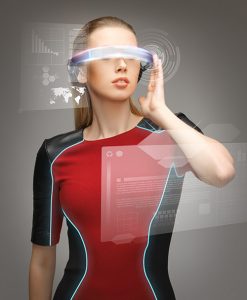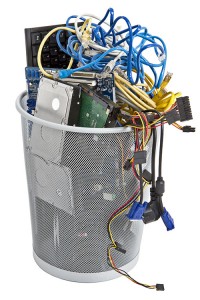 Samsung recently introduced its new Galaxy Note 8 which has updated features such as advanced security, memory management, a new display, enhanced cameras and wireless charging. Apple is expected to announce the new iPhone 8 today with similar technology enhancements. The announcement and rollout of updated smartphones is becoming an annual event anticipated by customers and tech followers alike. The technology continually improves and battery life gets extended, but the new devices look very similar to the original iPhone introduced in 2007. Some are looking beyond the incremental improvements and asking the question: what comes after the smartphone? What will computing and communication look like in the future? In this blog post I will explore some of those questions and some of the predictions. I look forward to your feedback and ideas as well.
Samsung recently introduced its new Galaxy Note 8 which has updated features such as advanced security, memory management, a new display, enhanced cameras and wireless charging. Apple is expected to announce the new iPhone 8 today with similar technology enhancements. The announcement and rollout of updated smartphones is becoming an annual event anticipated by customers and tech followers alike. The technology continually improves and battery life gets extended, but the new devices look very similar to the original iPhone introduced in 2007. Some are looking beyond the incremental improvements and asking the question: what comes after the smartphone? What will computing and communication look like in the future? In this blog post I will explore some of those questions and some of the predictions. I look forward to your feedback and ideas as well.
What Comes Next
One of the new features of the Samsung device is the ability to dock it with a full size keyboard and monitor, thus expanding the computing power of the handheld. I still remember the first time I docked a laptop, which meant that I could get rid of the big box on top of or under my desk. Just as laptops have largely replaced the desktop box, it appears that the smartphone may take over the laptop for ease of use and functionality.
The small screen and keyboard on a smartphone are inconvenient at best and often are an outright pain. I can often be seen typing with my little finger because I can’t figure out how to get my thumbs any sharper. What if we could get away from the need for a keyboard for input and a screen for display? We are still using the QWERTY keyboard which was first laid out in 1872 in order to slow down typists, not to speed them up.
The Return of Glass?
In an April ZDNet article, Steve Ranger predicts that we will move away from the smartphone and towards Google Glass type devices coupled with virtual and augmented reality. That satisfies my criteria by replacing the screen with a projected image and the keyboard with voice commands such as those spoken to Siri and Alexa and Bixby. Google Glass was great technology but it had an image problem and was not well received by those not wearing the glasses. There were concerns about privacy stemming from the fact that they had a camera that could be turned off and on with minimal indication, allowing covert use. There were also safety concerns, since wearers could easily be distracted while crossing a busy street, although staring down at a smartphone clearly has its own safety issues. The Glass technology is ready, but there is still a stigma to its use and acceptance.
My Wish List
I wish for a device that is always connected to the cloud and lets me project several large screens at once on surfaces such as a wall, a building, a sidewalk or even suspended in air. I also want to be able to share that image with others at any time. I want it to flawlessly understand my voice commands and dictation and understand contextually where I am at and what I might request next. I want it to connect seamlessly to other devices such as my smart car and my smart home devices. Finally, I would like to get rid of the small device in my pocket or in my hand so I can be free to explore the natural world with full attention.
Thoughts
What does your ultimate computing/communications device look like? Are we close to your vision or are there still some hurdles to overcome? Let me know what your dream device looks like.
Kelly Brown is an IT professional and assistant professor of practice for the UO Applied Information Management Master’s Degree Program. He writes about IT and business topics that keep him up at night.



